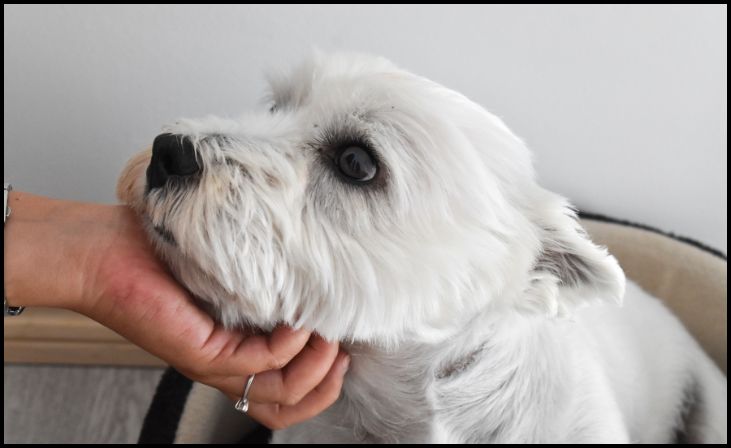Welcoming a new dog into your home is an exciting and life-changing experience. As a new pet owner, it’s important to equip yourself with the knowledge and tools necessary to provide the best care for your furry friend. Proper dog care involves understanding your dog’s needs, establishing a routine, and creating a safe and loving environment. By following the right tips and advice, you can ensure that your dog grows up healthy, happy, and well-adjusted. In this guide, we will discuss nine essential dog care tips for new pet owners that will help you navigate the responsibilities of pet ownership and build a strong bond with your new companion.
What Should I Feed My New Dog?
Choosing the right food for your new dog is crucial for their health and well-being. Opt for high-quality dog food that is appropriate for their age, size, and breed. Look for products with named meat sources, balanced nutrients, and minimal fillers or artificial additives. Consult your veterinarian to determine specific dietary needs and feeding guidelines. Establish a consistent feeding schedule and portion control to maintain a healthy weight. Gradually transition between different foods if necessary to prevent digestive upset, and always provide fresh water. Remember, a nutritious diet tailored to your dog’s individual needs is key to their overall health and vitality.
How Can I Ensure My Dog Stays Healthy?

Ensuring your dog stays healthy involves several key practices. Schedule regular veterinary check-ups to monitor their overall health and update vaccinations as recommended. Implement a preventive care regimen that includes flea and tick control, regular grooming, and dental care. Provide a balanced diet with high-quality dog food suited to their age and activity level. Engage them in regular exercise appropriate for their breed to maintain a healthy weight and promote mental stimulation. Watch for any changes in behavior or appetite, as early detection of health issues can lead to prompt treatment and better outcomes for your dog’s well-being.
9 Best Dog Care Tips For New Pet Owners
1. Provide Proper Nutrition
Ensuring your dog receives proper nutrition is fundamental to their overall health and well-being. Start by choosing a high-quality dog food that meets the nutritional requirements for your dog’s age, size, and breed. Look for dog foods with real meat as the first ingredient, and avoid those with excessive fillers, artificial preservatives, and by-products. It’s also important to establish a consistent feeding schedule and portion control to prevent obesity and related health issues.
Read Also – 9 Essential Vaccinations And Preventive Care For Pets
2. Regular Veterinary Check-ups

Regular veterinary check-ups are crucial to maintaining your dog’s health. Schedule your first vet visit as soon as possible after bringing your dog home. During this initial visit, the veterinarian will perform a comprehensive health assessment, administer necessary vaccinations, and discuss parasite prevention. Routine vet visits should occur at least once a year for adult dogs and more frequently for puppies or senior dogs.
3. Socialization and Training
Raising a well-mannered and self-assured dog requires both socialization and training. Start introducing your puppy to many situations, people, and animals at a young age to help them become socialized. Adequate experiences during the crucial phase of socializing, which usually lasts until 16 weeks of age, might avert behavioral issues later on. To teach your dog etiquette and basic instructions, sign them up for a basic obedience course or puppy kindergarten.
4. Exercise and Mental Stimulation
Regular exercise and mental stimulation are vital for your dog’s physical and mental well-being. Depending on your dog’s breed and age, they may require different levels of physical activity. Daily walks, playtime, and interactive games help keep your dog fit and prevent boredom-related behaviors like chewing and digging. Mental stimulation can be provided through puzzle toys, training sessions, and enrichment activities that challenge your dog’s problem-solving skills.
5. Grooming and Hygiene
The comfort and well-being of your dog depend on you maintaining their hygiene and grooming. Maintaining a clean, free of tangle coat for your dog is made possible by regular brushing. Your dog’s breed and coat type will determine how often they should be brushed. As required, give your dog a bath, and use shampoo designed specifically for dogs to prevent skin irritation. Comprehensive grooming also includes regular dental treatment, ear cleaning, and nail cutting. While regular tooth brushing may help prevent periodontal disease and other health problems, dental hygiene is something that is often disregarded.
6. Safe and Comfortable Living Environment
Creating a safe and comfortable living environment is crucial for your dog’s well-being. Ensure your home is dog-proofed by removing any hazards, such as toxic plants, chemicals, and small objects that can be swallowed. Provide a comfortable sleeping area with a cozy bed and a designated space for your dog’s food and water bowls. If you plan to crate train your dog, choose an appropriately sized crate and make it a positive and secure space.
7. Understanding Canine Body Language

Understanding your dog’s body language is key to effective communication and building a strong bond. Dogs use body language to express their emotions, needs, and intentions. Learn to recognize common signals such as wagging tails, ear positions, and facial expressions. For example, a wagging tail doesn’t always mean a happy dog; the context and tail position matter.
8. Proper Identification and Microchipping
Ensuring your dog has proper identification is essential for their safety. A collar with an ID tag that includes your contact information is the first line of defense if your dog gets lost. Additionally, consider microchipping your dog as a more permanent form of identification. Microchips are implanted under the skin and contain a unique identification number that can be scanned by veterinarians or animal shelters.
9. Establishing a Routine
Establishing a consistent routine is important for your dog’s sense of security and well-being. Dogs thrive on routine, which helps them understand what to expect and reduces anxiety. Set regular times for feeding, walking, playtime, and bedtime. Consistency in daily activities helps your dog develop good habits and makes training easier. A well-structured routine also helps prevent behavior problems that can arise from uncertainty and irregular schedules.
For More – 10 Health And Happiness Tips For Dogs
Conclusion
Becoming a new pet owner is a rewarding journey filled with joy and responsibility. By following these nine essential dog care tips, you can ensure that your dog leads a healthy, happy, and fulfilling life. Providing proper nutrition, regular veterinary care, socialization, and training, along with creating a safe and comfortable environment, are fundamental aspects of responsible pet ownership. Understanding your dog’s needs and body language, along with maintaining a consistent routine and proper identification, will help you build a strong and lasting bond with your furry friend.
FAQs
How often should I groom my dog?
Regular grooming sessions depend on your dog’s breed and coat type. Generally, dogs with longer hair or thick coats may need grooming sessions every 4-6 weeks, while short-haired dogs may require less frequent grooming.
What vaccinations does my dog need?
Your veterinarian will provide a vaccination schedule based on your dog’s age, health, and lifestyle. Core vaccinations typically include rabies, distemper, parvovirus, and adenovirus, with additional vaccines recommended based on risk factors.
How much exercise does my dog need daily?
Most dogs benefit from at least 30 minutes to 1 hour of exercise each day, depending on their breed, age, and energy level. Adjust the intensity and duration of exercise based on your dog’s individual needs and preferences.



